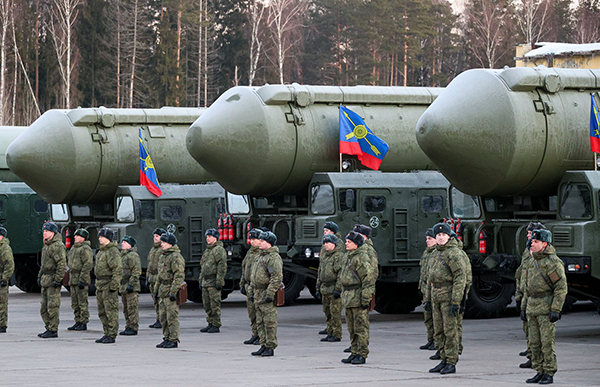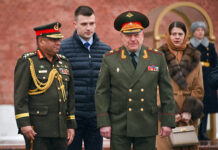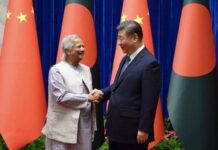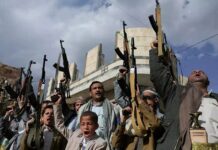Maj Gen Deepak Mehta
Russia’s invasion has killed thousands of people, displaced nearly 10 million, and raised fears of a wider confrontation between Russia and the United States – by far the world’s biggest nuclear powers.
Within days of Russia’s Feb. 24 invasion, Putin put the country’s deterrence forces – which include nuclear arms – on high alert, citing what he called aggressive statements by NATO leaders and Western economic sanctions against Moscow.
Russia’s deputy foreign minister said, on 10 May, that a decision on the possible use of nuclear weapons was clearly set out in Russia’s military doctrine, when asked if Russia would rule out a preemptive tactical nuclear strike on Ukraine. “We have a military doctrine – everything is written there,” Alexander Grushko was quoted by state news agency RIA as saying.
Russia’s official military deployment principles allow for the use of nuclear weapons if they – or other types of weapons of mass destruction – are used against it, or if the Russian state faces an existential threat from conventional weapons.
The decision to use Russia’s vast nuclear arsenal, the biggest in the world, rests with the Russian president, currently Vladimir Putin.
U.S. Central Intelligence Agency Director William Burns said, on 7 May, that Putin believes he cannot afford to lose in Ukraine and cautioned that the West could not ignore the risk of the use of tactical nuclear weapons by Moscow.
“We don’t see, as an intelligence community, practical evidence at this point of Russian planning for a deployment or even use of tactical nuclear weapons,” Burns said. He cautioned, though, that “the stakes are very high for Putin’s Russia.”
Circumstances for Strike
Russia has accused However NATO countries of a “hybrid” confrontation that now “dangerously balances on the edge of open military clash.””Such a move would be able to trigger one of the two emergency scenarios described in our doctrine,” as per Russian strategists, adding “if Western countries try to test our resolve, Russia will not back down.”
Nuclear brinkmanship from Putin has been unprecedented. He ordered a snap nuclear wargame before the invasion and days later put his nuclear forces on high alert. And the Kremlin has repeatedly signaled it could resort to nuclear weapons if it determines the West’s intervention in the conflict goes too far.
As the conflict drags on, and Russia’s conventional forces suffer surprisingly heavy losses while its economy reels, the prospect that Putin might resort to using weapons of mass destruction is increasing. Moscow has already demonstrated that it is willing to use hypersonic missiles for the first time in a war.
A decree signed by Putin on June 2, 2020, said Russia views its nuclear weapons as “exclusively a means of deterrence”. It repeats the phraseology of the military doctrine but adds details about four circumstances under which a nuclear strike would be ordered. These include reliable information of a ballistic missile attack on Russia and an enemy’s attack “on critical state or military installations of the Russian Federation, the incapacitation of which would lead to the disruption of a response by nuclear forces.”
US Intelligence Assessment
Putin could view the prospect of defeat in Ukraine as an existential threat to his regime, potentially triggering his resort to using a nuclear weapon, a top US intelligence official has warned. The warning came in an assessment from intelligence chiefs briefing the Senate on worldwide threats.
The Director of National Intelligence, Avril Haines, told the Senate’s Armed Services Committee that Putin would continue to brandish Russia’s nuclear arsenal in an attempt to deter the US and its allies from extending further support for Ukraine.
The Russian leader would not use a nuclear weapon until he sees an existential threat to Russia or his regime, Haines argued.
But she added that he could view the prospect of defeat in Ukraine as constituting such a threat, the report said.
“We do think that [Putin’s perception of an existential threat] could be the case in the event that he perceives that he is losing the war in Ukraine, and that Nato in effect is either intervening or about to intervene in that context, which would obviously contribute to a perception that he is about to lose the war in Ukraine,” Haines told the committee hearing.
She added that the world would probably have some warning that nuclear use is imminent.
The prediction for Ukraine is a long, gruelling war of attrition, which could lead to increasingly volatile acts of escalation from Putin, including full mobilisation, the imposition of martial law, and if the Russian leader feels the war is going against him, endangering his position in Moscow even the use of a nuclear warhead, the report said.
Putin, who has repeatedly expressed resentment over the way the West treated Russia after the 1991 fall of the Soviet Union, says Ukraine has been used by the United States to threaten Russia.
He justified his Feb. 24 order for a special military operation by saying Ukraine had persecuted Russian speakers and the United States was keen to enlarge the NATO military alliance in a way that would endanger Russia.
The Likelihood
IMR’s assessment of the likelihood of Russia using nuclear weapons, most likely scenario and US response is given below.
Putin is more likely than not to use nuclear weapons in the war in Ukraine if he faces devastating defeat. Nuclear weapons are the ultimate tools of last resort; any rational leader would consider using them if his or her regime (or life) were on the line.
Putin presumably expects his threats will induce NATO to abandon Ukraine. However, if he believes he is facing defeat or a costly stalemate—or has a chance of success through sharp escalation—there is some risk he will carry out his threats.
If Russian forces suffered a humiliating defeat in the campaign to control Donbas, Putin could be pressed by hardliners to deliver on his nuclear threats; but he is unlikely to do so, since this would only galvanize a harsh US and allied response without providing any significant military advantage.
Most Likely Use Scenario
Washington and Moscow have walked away from several treaties to control the deadliest weapons, including one that outlawed intermediate-range nuclear missiles that could threaten Europe.The only remaining nuclear pact between the two sides is the New Strategic Arms Reduction Treaty, which limits deployed strategic weapons to 1,550 each. Biden and Putin agreed last year to extend it until 2026. The treaty does not cover any of the thousands of smaller, or “battlefield,” nuclear weapons in their respective arsenals, including at least 2,000 in Russian stockpiles, according to public estimates.
Putin would seek to create fear instead of rage. Thus, nuclear weapons would be used in Ukraine rather than on NATO territory, and they would be used against military, not civilian, targets. Any attack would likely involve detonating half a dozen low-yield air bursts (in order to minimize fallout) against well-entrenched Ukrainian military positions.
Putin might begin with the ostentatious movement of nuclear forces, such as sending weapons to Russia’s Baltic enclave of Kaliningrad. He could order a “demonstration” or possibly a detonation at a Russian test range.
Putin may hope that just by crossing the nuclear threshold, he would so shock Ukraine and its Western backers—and so terrify allied publics—that they would back down rather than risk further escalation.
The risk of nuclear use through a mistake or blunder is higher than through intent. Many Russian battlefield systems are dual-capable and also designed to unleash both conventional and nuclear or chemical warheads. It could be exceedingly difficult to know when the Russian military has decided to pursue a nuclear option. It is difficult to know if the S-300 battery packs a conventional warhead or a nuclear one.
Likely US and Allied Response
One possible response to Putin’s nuclear use would be to negotiate some kind of resolution in which all parties could declare Potemkin victories and find a solution before nuclear weapons are used.
If the Russian attack caused little damage, NATO might first try to issue an ultimatum with the aim of reaching a settlement on the Alliance’s and Ukraine’s terms.
A non-nuclear military response (eg, conventional strikes on military bases and infrastructure in Russian territory) would probably not be decisive and would appear inadequate to many.
Defending Ukraine may simply not worth risking a nuclear escalation. But there are also serious implications of not doing it. Absence of a US nuclear response would gravely weaken the credibility among both friends and adversaries of the entire strategy of deterring nuclear attack through the prospect of US nuclear retaliation.
If Putin resorted to the use of nuclear weapons, the United States and its allies would need to respond quickly and decisively to ensure that Putin paid a heavy price for crossing the nuclear threshold.


















